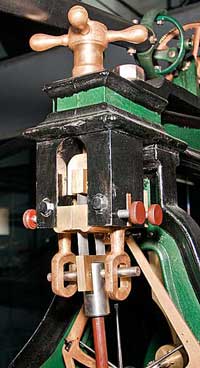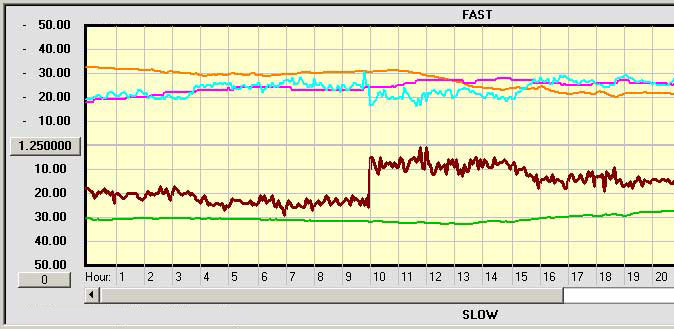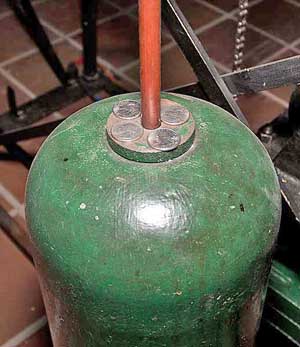Adjusting the Rate
We have two ways to adjust the rate of the clock. Coarse adjustments are made with a knob at the top of the pendulum. This allows us to raise or lower the whole pendulum to change its length. If the pendulum is longer it runs slower. We use this knob only for large changes because it disturbs the pendulum, and it takes a couple of hours to settle into any new rate. To make smaller adjustments we add weights to the top of the pendulum bob. When we add a weight to the bob, it raises the center of mass and makes the pendulum run faster. It's equivalent to making the pendulum shorter. Each gram of weight makes the pendulum run faster by about one microsecond. This is convenient because it makes it easy to make the proper correction. In the graph below, I added 10 grams to the bob at 10 AM, and the clock immediately ran faster by 10 microseconds (.000010 seconds per beat).
They adjust the Great Clock of Westminster (where Big Ben is) by adding English pennies to the pendulum. When we were just beginning to work on the Courthouse clock, I placed four quarters on top of the bob to see how much effect they would affect the rate. You can see them in this picture. But we soon learned that this was a mistake. Shortly after making this adjustment I went home and watched the clock graph on the web site. At about 1:30 in the afternoon I noticed a disturbance in the pendulum, and the rate decayed dramatically. What happened is that the door to the clock room had been left open by workmen. Someone came into the room, saw four quarters on top of the bob, and took them! We now use a set of calibrated brass weights to adjust the rate.
Atomic time
We use an 'atomic clock" to keep the Courthouse clock on time. The bells give us an audible indication of what time the clock is showing. I put a microphone in the clock room, and software in the clock room computer plays the sound of the room on the internet where we can hear it remotely. We can hear the clock tick and strike from anywhere in the world with an internet connection. But we can't use this to set the clock, because there is a lag time for the sound to pass through the internet, and the delay is variable.
I acquired a "Rubidium reference oscillator" which now runs in the clock room. It uses the atomic characteristics of a small capsule of the element Rubidium to generate a 10 MHz signal to a very high degree of accuracy. I built an interface to this oscillator that produces an audio tone every hour on the hour. This tone has a timekeeping accuracy of better than .02 seconds per year. The hourly tone is merged with the output of the microphone, and the combined sounds are sent to the internet. We can monitor these sounds in the clock room from anywhere with internet access. Each hour we hear the clock strike, and superimposed on this is the tone that occurs EXACTLY on the hour. We can then tell if the first toll of the strike bell is early, late, or on time. We adjust the strike of the clock to stay aligned with the Rubidium reference tone. I can use software on my computer to record the bells, and measure this recording to see how early or late the clock strike is relative to the Rubidium "atomic clock". Click here to hear a recording of the clock striking 2 o'clock. You'll hear a beep just after the strike train unlocks, just before the first strike of the strike bell. The image below shows this recording. It starts with the unlocking of the chime train, followed by four measures of Westminster chimes, the unlocking of the strike train, the reference beep, and two bells for 2 o'clock.
Now that we have a clear indication of whether the clock is early or late we can manage the interval between the reference beep and the strike bell. If there is a discrepancy of several seconds we can correct it by overriding the escapement. If the clock has fallen behind, we can pull out a gravity arm and let the escapement slip a few beats to advance the dials and the bells. If the clock is too fast we can prevent the escapement from operating to let the clock fall back. Major corrections are still managed with the setting key for the dials. This method is working well to keep the Courthouse clock on time. We can easily see discrepancies of less than a second and correct them.
|



